This blog post has been co-written with David Forsyth, Principal Curator, Renaissance and Early Modern History
‘None is clean’ could equally describe the Bible’s condition and the words uttered when it was brought in for conservation!


Published in Amsterdam in 1683, the Bible had a colourful history before entering the collections of National Museums Scotland in 1995. It was in use as the Pulpit Bible at the Kirk of Prestonpans, close to the scene of the battle between the Jacobite army and the Hanoverian forces on 21 September 1745.
A handwritten note was placed within the Bible, probably to act as provenance to bolster the claims that when the Jacobite army allegedly ransacked the Kirk at Prestonpans they tried to burn this Bible. The notes states that:
‘During the 1745 Rebellion a battle was fought there [Prestonpans]. The Highland Army being largely Catholic brought the Bible from the Presbyterian Church and threw it on a bonfire. It kept falling off and soldiers threw it up again with their broadswords, the marks of which can be seen. It was rescued by a young girl who was a servant at the manse and remained in her family until a descendant presented it to the Revd Walter Muir, then a Presbyterian minister in Edinburgh.’

In fact this is highly likely to be anti-Jacobite/Catholic propaganda, as both Catholics and Presbyterians would have held this Bible with the same reverence. Additionally, the majority of the Jacobite army was Episcopalian.
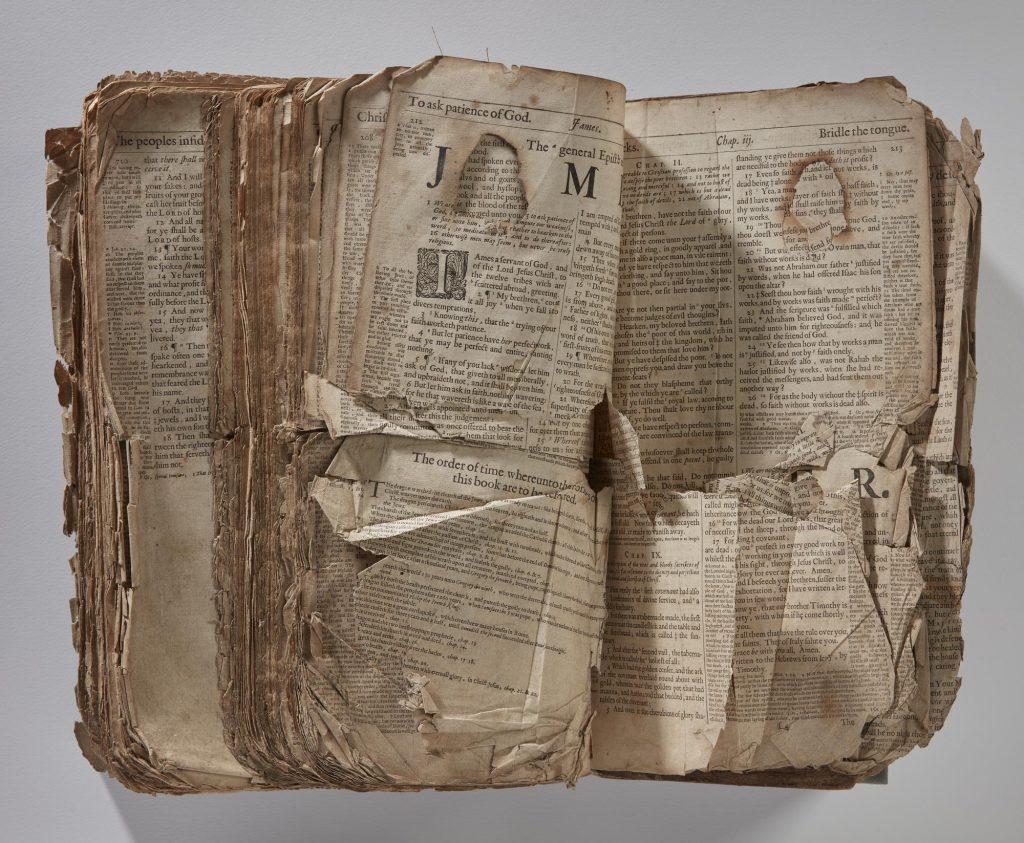
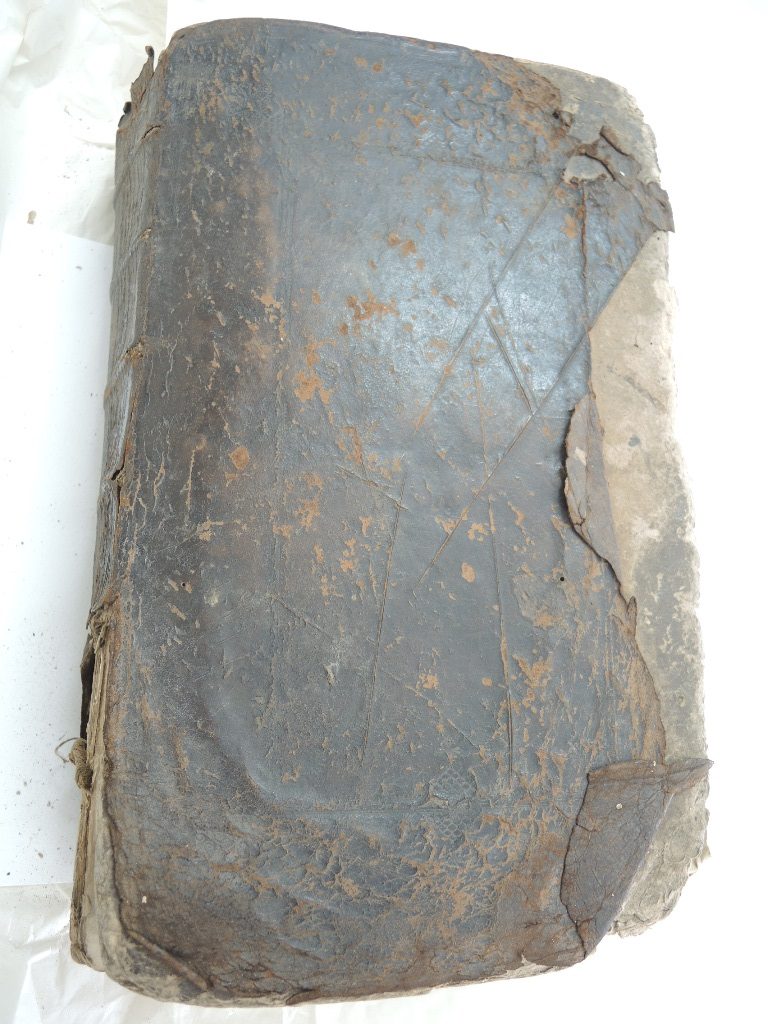
When an object has such a provenance it is important to retain any evidence of fire damage, sword marks and wear and tear in keeping with the age and history of the Bible.
However, the Bible showed signs of damage beyond this, including crumpled and distorted pages, foxing and discolouration.
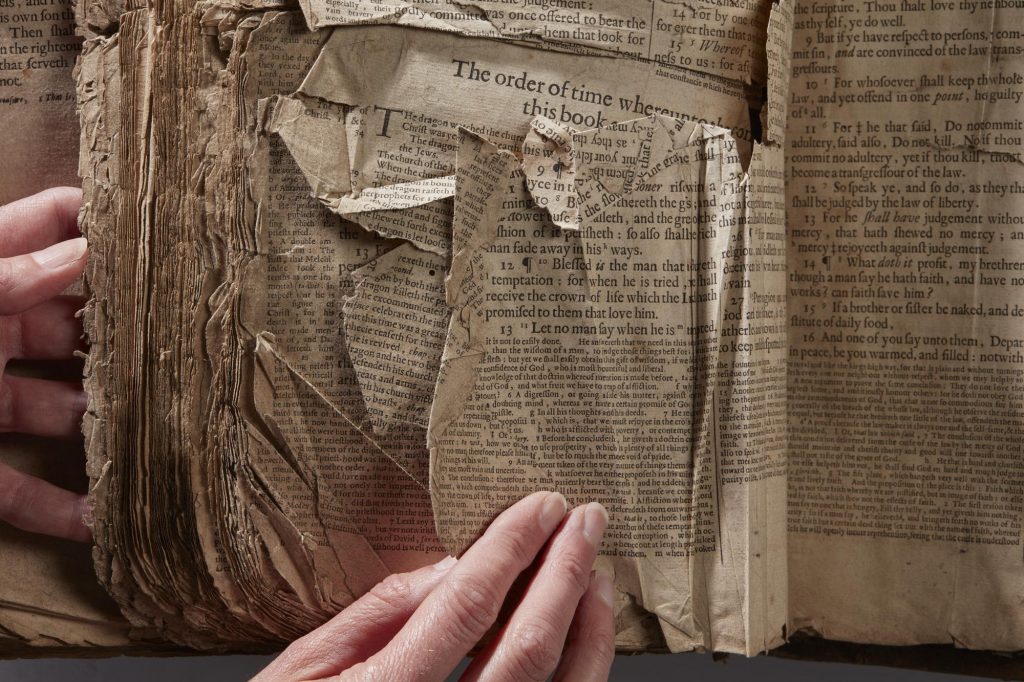
The surface dirt was monumental in its quantity and contained not just dirt but insects and local plant life!
Extensive tears filtrated through the whole volume and all of the brittle pages had some level of loss. The binding was broken and half the pages unbound and loose. The leather cover was delaminated and extremely damaged with leather rot and losses.
It was un-displayable and the full treatment would have taken many hundreds of hours. But with only a limited number of hours available for paper conservation, we decided to concentrate on treatment that would remove the loose dirt and flatten the distorted pages so that the Bible could be displayed on a book cradle for the exhibition and could be stored following the exhibition in a more stable condition.
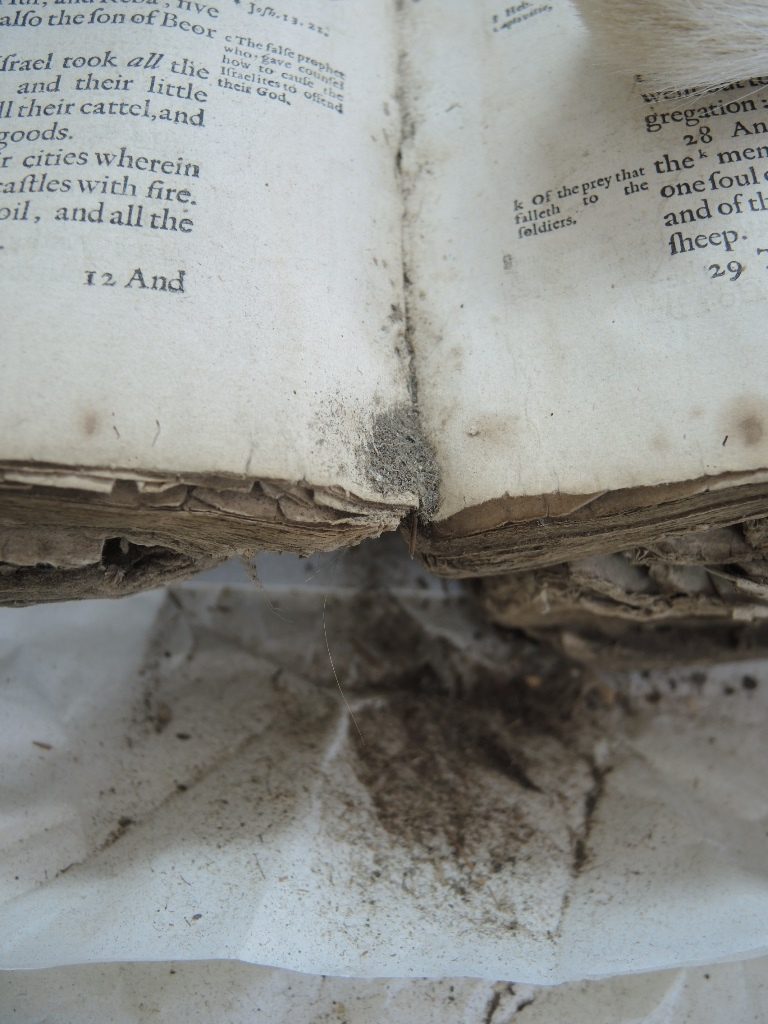
Surface cleaning was undertaken with a soft brush and latex sponge. Six small bags of dirt were kept to ‘analyse’.
Pages were humidified and pressed to reduce the worst creases. As some of the pages were not bound, it was possible to wash them by immersion in a bath of water to remove discolouration and then dry them flat under felts.
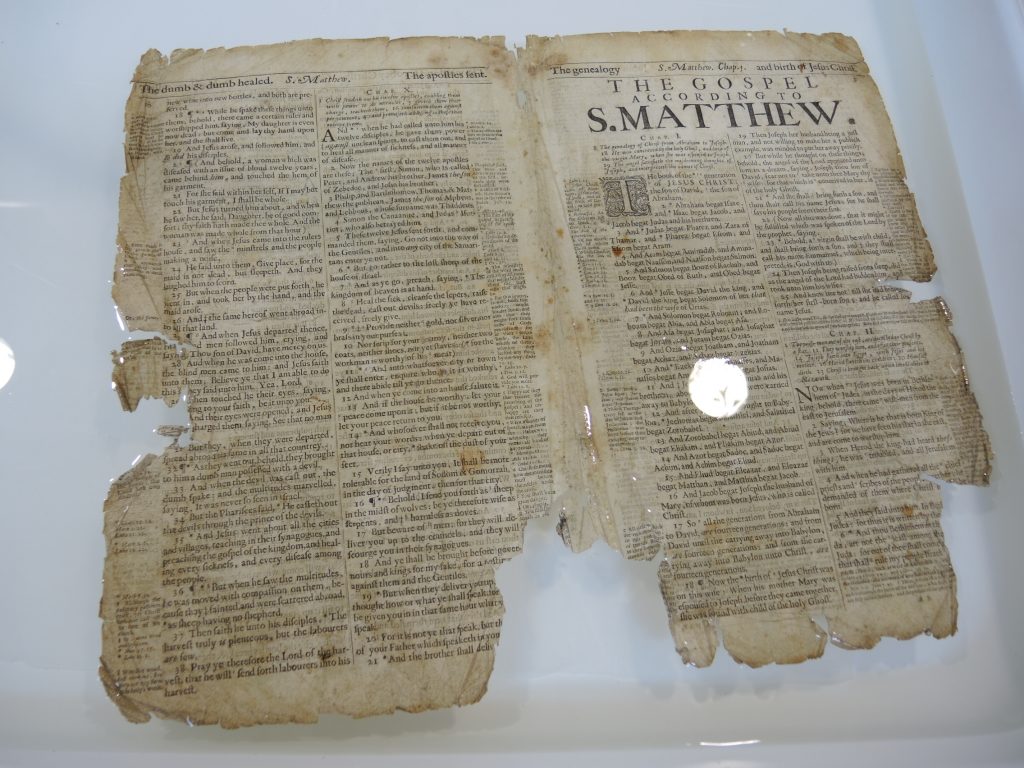
Some tears were repaired with wheat starch paste and Japanese paper but many remain untreated. Following the treatment, the pages could be realigned and it was (just about) possible to close the volume.
Following de-installation from the exhibition, we will continue to stabilise the Bible by carrying out further repairs and treating the fragile leather cover and ultimately house this weighty volume in an archival box.
The damage associated with the provenance was left untreated. The areas of fire damage and the ‘broadsword’ marks on the cover are preserved as evidence of either a bonfire rescue (or perhaps a misplaced cigarette).
This object may or may not have been in a battlefield or extricated from a fire but there is no disputing that the Prestonpans Bible has been through a war or two!
Bonnie Prince Charlie and the Jacobites is on at the National Museum of Scotland until 12 November 2017. Find out more at www.nms.ac.uk/jacobites.
